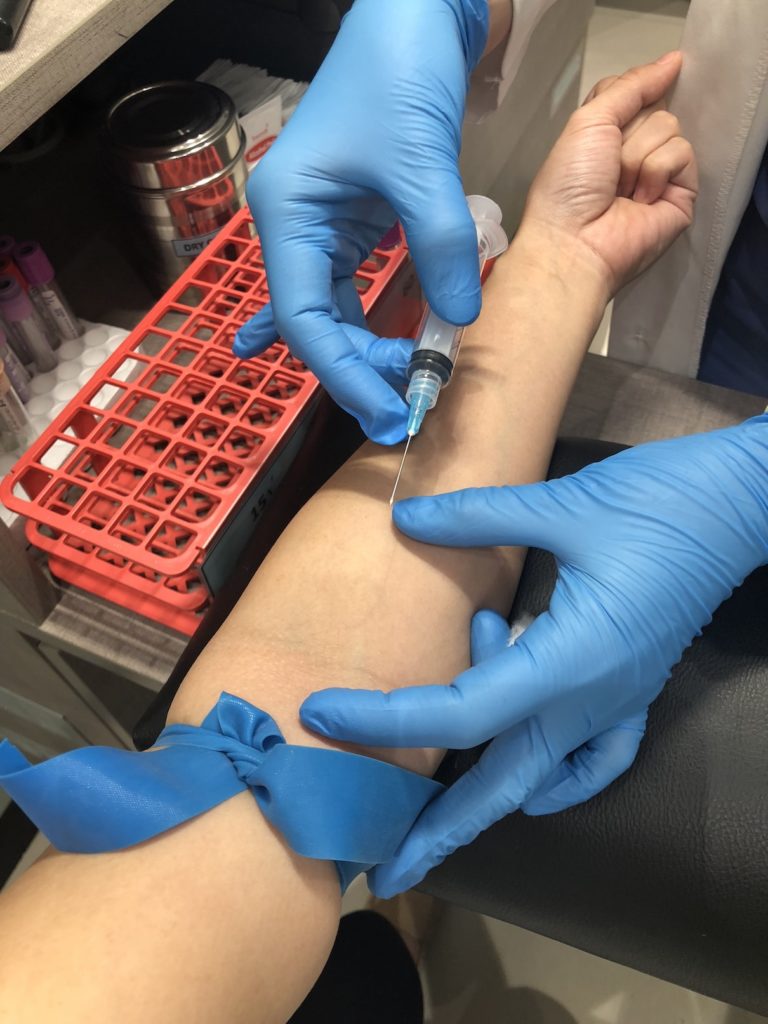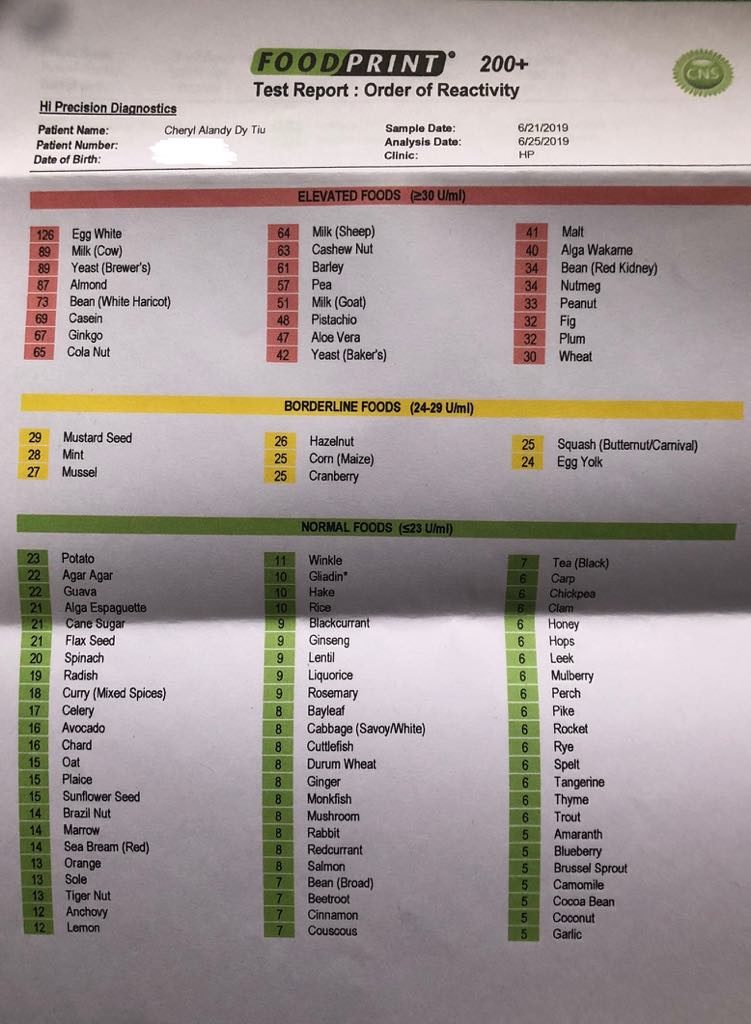I took the food intolerance test at Hi-Precision Diagnostics at Powerplant Mall in Rockwell, Makati a few months ago because I was curious. I had heard about it from friends who had taken it, and as a food journalist and blogger, I eat basically everything for a living, but have also noticed over time (age!!!) that there are certain food items that make me feel uncomfortable.
I’m one of the lucky ones who doesn’t have any food allergies so I can basically eat anything. But why is it that certain food items cause me to react unfavorably by way of bloating, discomfort, upset stomach and sluggishness? So I took it.


How does it work?
Well basically, you just show up at the clinic– no need to fast– and they inject you to take your blood sample and it’s done! In 10 days, they contact you to get your results. And this is when most people faint at the sight of the results (or wish they had never taken it)!

This is because the red boxes read all the food intolerances— food items we consume on a daily basis, and most of which we don’t know we have!
How the food intolerance test works is that they measure the Immunoglobulin G (IgG) antibodies’ reaction to food. Jojo Alejandrino, Partnership Head of Global Medical Technologies Manila, Inc., explains, “The results are displayed via a ‘traffic light’ display system. These are quantitative IGg protein levels in the patients’ blood. The higher the number, the more sensitive the patient is to that particular food. Since this is an elimination diet recommendation, it is advisable to totally lay off eating the foods in the Red zone for 3 to 6 months. Also, rotate and replace the food items in the Yellow zone, so that their levels can come down. Lastly, the patient can freely eat all the food items in the Green zone, while still striving for moderation.”

The “controversy”
I broke out with hives on a trip to Japan recently and made an appointment to see an allergy doctor when I got back. I had brought my food intolerance test results with me and my doctor immediately said, “Don’t believe that– it doesn’t work!” It puzzled me. But this is why some doctors may advise you otherwise, Hi-Precision’s Melissa Ongsue-Lee explained, “Food intolerance is a wellness test. It can’t be used for food allergies. Gut is the main function of the body, and a leeky gut means the nutrients don’t get absorbed by the body.” Allergy testes measure the Immunoglobulin E (IGe) antibodies. “The IGe antibody is the classic allergy where the symptoms appear immediately (puffing of the lips, swelling of the face, even anaphylactic shock or death),” explains Alejandrino. “Normally people with IGe antibodies already know which food they are allergic to since their childhood. For the IGg antibodies, these are the chronic symptoms, people may experience from eating food they are intolerant or sensitive to. It is non- life-threatening. It manifests itself 1 to 3 days after ingesting the offending food. Thus it is very hard to diagnose, since people eat several types of food everyday. This is what our FIT detects. So, even if a person is allergic to shrimp, for example, our FIT would not detect that since we are looking at two different proteins.” Intolerance is basically slow manifestation, i.e. migraines, inability to get pregnant, upset stomach, bloating, etc. “When you take something you’re intolerant to, your body is not performing at its peak, ie. athletes, or those who can’t get pregnant,” continues Ongsue-Lee. “After realizing what they are intolerant to, they eliminate.” *Allergies, on the other hand, are different in that, when you eat something you’re allergic to, it manifests quickly.
So, yes or no?
I intentionally waited for a few months after taking the test before writing the blog post as I wanted to see the results. I think the test verified a few of the things that I suspected I was intolerant to– gluten and milk in particular– but I’m still observing all the others that were listed in my red zone, ie. I eat a lot of egg whites and don’t notice any adverse effects. Mel did explain that you become “intolerant” if you have a lot of it. So whether you should take it or not– if you are curious about feeling uneasy, bloated, having allergies, etc. without any real causes, yes, why not. You’ll be surprised! When I cut out gluten and milk (I’m okay with cheese), I do feel much better. And whenever I ingest them again into my system, I feel a lot of discomfort which manifests in everything from bloating to an upset stomach. As for Jojo, he got rid of skin break-outs and hot flashes after eliminating mussels and shrimp from his diet, and Melissa’s daily migraines disappeared when she stopped drinking milk.
The Food Intolerance Test at all Hi-Precision branches is priced at P11,000. They also offer home service for an additional charge. For more information and the list of branches, visit the Hi-Precision website or phone (+632) 741-7777

